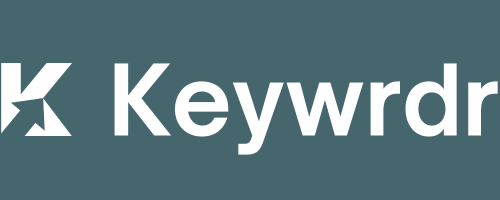- Achieving organic SEO growth requires significant resources and time, presenting a major challenge for businesses that need quick results or operate with limited budgets.
- Utilizing tools like Google Analytics and SEO platforms (e.g., Moz) is essential for monitoring performance and enhancing SEO strategies, providing insights that guide more effective adjustments.
- Retail businesses and local services must optimize their online presence with tailored content and Google Business Profiles to convert traffic into sales and enhance local SEO.
- Persisting with organic growth strategies builds credibility, reduces long-term costs, ensures sustainable traffic, and provides a competitive advantage by establishing a strong, trustworthy online presence.
In the digital era, visibility is paramount for businesses aiming to thrive and stand out. Numerous strategies can be implemented to enhance online presence, with paid practices like advertisements being one of the most direct paths. However, such strategies can become cost-prohibitive, requiring constant financial input to sustain results. This leads many businesses to explore organic growth strategies, which promise sustainable improvements in digital visibility and SEO without ongoing expenses.
But despite their appeal, achieving organic growth in SEO is fraught with challenges. This article will delve into why organic growth is hard to achieve, exploring the intricacies and offering strategies to navigate these hurdles effectively.
Understanding Organic Growth
What is Organic Growth?
Organic growth refers to the natural increase in a website’s traffic and its enhanced visibility that comes from unpaid efforts. Unlike paid advertising, which propels a website to the forefront temporarily, organic growth involves a series of strategic actions aimed at improving a website’s rankings in search engine results pages (SERPs) over time. The core strategies underpinning organic growth include:
- Content Optimization: Creating high-quality, relevant content that addresses the needs and questions of the target audience. This content must be optimized for search engines, focusing on factors such as keyword relevance, readability, and the incorporation of multimedia elements to improve engagement.
- Backlink Building: Gaining backlinks from reputable sites is crucial for organic growth. Search engines view these links as votes of confidence, which can significantly boost a site’s authority and ranking.
- Keyword Integration: Identifying and integrating the right keywords—terms your target audience searches for—is essential. This practice helps to ensure that the content appears in relevant searches, driving targeted traffic to the site.
- Technical SEO: Enhancing the technical aspects of a website, such as its mobile-friendliness, loading speed, and easy navigation structure, also contributes to organic growth. These factors affect user experience and, by extension, search engine rankings.
Organic growth is a compound process; the benefits accumulate over time as the website becomes more authoritative and gains trust from both users and search engines.
Organic Growth vs Inorganic Growth
The distinction between organic and inorganic growth strategies in digital marketing lies in their approach and impact:
| Aspect | Organic Growth | Inorganic Growth |
| Cost | Primarily time and effort; financial costs are minimal unless outsourcing to professionals. | Higher upfront financial costs for ads and paid marketing campaigns. |
| Effort | Continuous and sustained effort in content creation, SEO, and engagement strategies. | Effort is concentrated around campaign durations and budgets. |
| Impact Duration | Long-term; builds gradually but results in sustained traffic and ranking improvements. | Short-term; results last as long as the campaign is active. |
| SEO Benefits | Directly improves a site’s SEO, enhancing visibility and credibility with search engines over time. | Does not improve SEO directly; focuses on immediate traffic generation. |
| Audience Trust | Builds trust and credibility organically, leading to higher engagement and conversion rates. | Less impact on trust and credibility; viewers may perceive ads as less trustworthy. |
Inorganic growth, such as pay-per-click (PPC) advertising, can provide immediate visibility and traffic boosts. These strategies are particularly useful for short-term goals or specific campaigns where quick results are paramount. However, they require continuous funding to maintain their effectiveness, and their benefits cease once the funding stops.
On the other hand, organic growth strategies offer sustainable improvements. They help establish a robust digital presence that can continually attract and engage users. The organic approach enhances a website’s SEO, making it more likely to earn a high ranking in SERPs, which leads to ongoing organic traffic. This method of growth is particularly beneficial for businesses looking to build a long-lasting online presence that continuously generates leads and sales without ongoing direct costs.
Core Challenges in Achieving Organic Growth
Resource Allocation and Budget Constraints
Achieving organic growth through SEO is fundamentally resource-intensive. It demands not just a one-time effort but a continuous commitment to several vital activities, each requiring its own set of resources:
- Content Creation: Regularly producing high-quality content that meets the needs of your audience and adheres to SEO best practices is crucial. This can include articles, blogs, videos, and social media posts.
- Site Optimization: Continuous improvements to the website’s architecture, enhancing user experience (UX), and ensuring the site is mobile-friendly and fast-loading are essential tasks that require technical SEO expertise.
- Keyword Research: Keeping up with the ever-evolving landscape of keyword trends and search engine algorithms necessitates ongoing research and adaptation.
- Link Building: Developing a strategy to earn backlinks from reputable sources involves networking, content marketing, and often, outreach campaigns.
For smaller businesses, where budget and manpower are typically more constrained, dedicating sufficient resources to these tasks can be challenging. Smaller teams might struggle with the breadth of skills required for comprehensive SEO or simply with the amount of time it takes to see results. Consequently, resource allocation becomes a balancing act between maintaining daily operations and investing in long-term growth strategies.
The Slow Pace of SEO Results
One of the most challenging aspects of SEO is the time it takes to see tangible results. Organic growth does not occur overnight; it is a gradual process that unfolds over months or even years. Here’s why the timeline for SEO can be a significant challenge:
- Building Site Authority: Search engines like Google use complex algorithms to rank websites, and a key factor is the site’s perceived authority, which is built over time through consistent content publication and earning backlinks.
- Keyword Ranking Improvements: Climbing the ranks in search results for competitive keywords requires sustained SEO efforts and adjustments based on performance analytics.
- Algorithm Adaptations: Search engines frequently update their algorithms to improve user experience and accuracy in delivering relevant results. Each update can affect website rankings, requiring further adjustments in SEO strategies.
For businesses under pressure to deliver immediate results, such as startups looking to quickly establish a market presence or companies reliant on seasonal trends, the slow pace of SEO can be particularly frustrating. Convincing stakeholders to continue investing in SEO can be difficult when the short-term returns are not immediately evident, making internal justification a hurdle in itself.
Industry-Specific Challenges
Navigating Organic Growth in Retail
Retail businesses operate in a fiercely competitive environment, and achieving organic growth requires not just attracting traffic but converting that traffic into sales. Here are some of the unique challenges faced by retail businesses in maintaining organic growth:
- Optimizing User Experience (UX): A seamless and intuitive user experience on retail websites is crucial. This includes fast loading times, easy navigation, and mobile responsiveness. Visitors are more likely to make a purchase if the buying process is straightforward and hassle-free.
- Content Strategy for E-commerce: Content on retail sites needs to do more than just attract visitors; it should persuade them to purchase. This involves high-quality product descriptions, compelling calls-to-action (CTAs), and engaging product-related content that guides consumers towards making a purchase decision.
- Customer Reviews and Trust Signals: Leveraging customer reviews and trust signals can significantly boost conversion rates. Positive reviews enhance credibility and can be a decisive factor for customers unsure about purchasing.
- Search Engine Optimization (SEO) for Products: Retail sites must ensure that their product pages are optimized for search engines, including the use of relevant keywords, optimized images, and structured data to enhance visibility in search results.
Addressing these challenges requires a holistic approach to SEO and content strategy, focusing on every stage of the customer journey to enhance both traffic and conversion rates.
Building a Digital Presence with Google Business Profile
For local retail businesses and service providers, a Google Business Profile (formerly Google My Business) is an essential tool for boosting organic visibility. This profile acts as the first point of contact between a business and potential local customers, making its optimization critical for attracting organic traffic. Here are key strategies for leveraging a Google Business Profile effectively:
- Complete and Accurate Information: Ensure that all information is comprehensive and up-to-date, including address, contact details, business hours, and services offered. This accuracy helps potential customers find what they need quickly and improves trust.
- Regular Updates and Posts: Posting regular updates or offers directly on your Google Business Profile can keep your business relevant and engaging. These posts appear in Google Search and Maps, giving potential customers insights into what’s new with your business.
- Encourage and Manage Reviews: Positive reviews can significantly enhance a business’s reputation and SEO. Encourage satisfied customers to leave feedback, and respond professionally to reviews, especially negative ones, to show that you value customer input and are committed to improving service.
- Use of Keywords: Incorporate relevant local and business-specific keywords in your profile’s description and posts to improve its discovery in local search queries.
By strategically managing a Google Business Profile, businesses can significantly enhance their local SEO efforts, driving more foot traffic and increasing organic searches in their locality. This is crucial for maintaining visibility in local search results and attracting more organic traffic to both their physical locations and online platforms.
Strategies to Overcome Organic Growth Barriers
Utilizing Digital Tools for SEO Enhancement
For businesses looking to optimize their SEO strategies effectively, digital tools are indispensable. They provide the analytics and insights necessary to understand performance and identify areas for improvement. Here are some key tools and how they can be leveraged:
- Google Analytics: This tool is crucial for tracking website traffic and user behavior. Businesses can see where their visitors are coming from, what pages they are engaging with, and how long they stay on the site. This data helps in refining SEO strategies and user experience to increase retention and conversion rates.
- SEO Platforms (Moz, SEMrush, Ahrefs): These platforms offer a wide range of features, including keyword research, competition analysis, backlink tracking, and on-page optimization recommendations. They provide actionable insights that can help in adjusting strategies to enhance organic search rankings.
- Google Search Console: This tool helps monitor a website’s presence in Google search results. It provides insights into which queries bring users to the site, how high the site ranks for specific keywords, and identifies issues that might affect rankings, such as crawl errors or security issues.
By integrating these tools into their SEO practices, businesses can make data-driven decisions that boost their organic growth efforts, ensuring that every step taken is aligned with actual user behavior and search engine requirements.
Social Media Integration
Social media platforms are more than just channels for content distribution; they are powerful tools for driving organic growth. Instagram, for example, offers immense potential for businesses to engage with their audience:
- Organic Engagement: By regularly posting relevant, engaging content and interacting with followers, businesses can build a community around their brand. This active engagement helps in boosting the brand’s visibility and authority.
- Instagram Organic Growth Services: These services specialize in strategies to increase followers and engagement without paid advertising. They use tactics such as targeted content, strategic hashtag use, and timing posts for maximum visibility.
- Cross-Promotion: Integrating Instagram activity with other content strategies can amplify reach. For instance, sharing blog posts on Instagram or using Instagram stories to highlight behind-the-scenes content can drive traffic back to the website.
Leveraging Instagram and other social media platforms thus contributes to broader SEO goals by generating organic traffic, improving brand recognition, and enhancing user engagement.
Professional Services as a Catalyst for Organic Growth
Navigating the complexities of SEO can be daunting, especially for businesses without specialized expertise. This is where professional SEO services come into play:
- Strategy Development: SEO professionals can develop tailored strategies that align with specific business goals and market conditions. They have the expertise to identify the most impactful tactics for a business’s unique context.
- Technical SEO Management: Many aspects of SEO, like site structure optimization, mobile responsiveness, and page speed enhancement, require technical know-how. SEO professionals ensure these critical elements are correctly implemented.
- Content Optimization: SEO experts can help create content that resonates with both search engines and human audiences. This includes keyword optimization, writing meta tags, and ensuring content is informative and engaging.
Investing in professional SEO services helps businesses implement more sophisticated organic growth strategies efficiently and effectively. This not only saves time and resources but also significantly improves the chances of achieving desired SEO outcomes, making professional services a valuable asset for any business serious about its digital presence.
Advantages of Persisting with Organic Growth
Organic growth strategies are fundamental for long-term business success in the digital landscape. These strategies do more than just improve a business’s SEO; they foster a relationship of trust with audiences that can yield significant benefits over time. Here are the key advantages of persisting with organic growth:
1. Enhanced Credibility and Trust
- Building Trust with Search Engines: By consistently applying SEO best practices and generating quality content, businesses can improve their rankings in search engine results pages (SERPs). High rankings are often interpreted by users as a sign of credibility, as search engines are seen as vouching for the website’s authority and relevance.
- Building Trust with Audiences: When users see a business consistently appearing in their search results, it enhances the business’s reputation. This credibility is crucial, especially in competitive markets where consumers have many options. Trust leads to higher engagement rates and stronger customer loyalty.
2. Cost-Effectiveness
- Long-Term Cost Savings: Unlike paid search strategies where costs are ongoing and can increase with competition, organic growth relies on skills and strategies that become more effective over time, often at a decreasing marginal cost. Once a strong SEO foundation is built, the incremental cost of maintaining it is typically lower compared to the costs associated with paid advertising.
- Compound Returns: The efforts put into SEO and organic strategies are cumulative. The content that is created and optimized today will continue to attract traffic and generate leads or sales well into the future, providing a return on investment that grows over time.
3. Sustainable Traffic and Engagement
- Consistent Traffic Without Continuous Investment: With a robust SEO strategy, a website can continue to attract traffic without the need for constant investment. Organic search results do not disappear the way paid ads do when campaigns end, ensuring a steady flow of visitors.
- Higher Quality Traffic: Traffic that comes from organic search is often more targeted and engaged because it is generated by users actively searching for something specific that the business offers. This makes them more likely to convert, whether the conversion is defined as a sale, a subscription, or some other action.
4. Competitive Advantage
- Differentiation in Market: Businesses that excel in organic growth strategies can differentiate themselves in saturated markets. Being visible in organic search results can set a business apart from competitors who rely heavily on paid advertising.
- Barrier to Entry: Establishing a strong organic presence can act as a barrier to entry for new competitors. New entrants may find it challenging to displace well-established websites without significant investment.
Persisting with organic growth strategies is not just about improving search engine rankings; it’s about building a durable online presence that supports a business’s broader goals. This approach not only enhances visibility and leads but also fortifies the business’s overall market position, making it a strategic imperative in the digital age.
Conclusion
Achieving organic growth in SEO is challenging due to its resource-intensive nature and the time required to see tangible results. However, the long-term benefits of establishing a solid organic presence online are undeniable. By understanding the hurdles and implementing effective strategies, businesses can enhance their digital visibility and achieve sustainable success in the competitive digital landscape.
Resources
Paid Advertising: Understanding How Ad Format and Visuals Impact Ad Link Clicks and Conversions
https://scholarworks.bgsu.edu/cgi/viewcontent.cgi?article=1941&context=honorsprojects
What makes an online review credible? A systematic review of the literature and future research directions
https://link.springer.com/article/10.1007/s11301-022-00312-6
Search Engine Optimization (SEO) Starter Guide
https://developers.google.com/search/docs/fundamentals/seo-starter-guide




